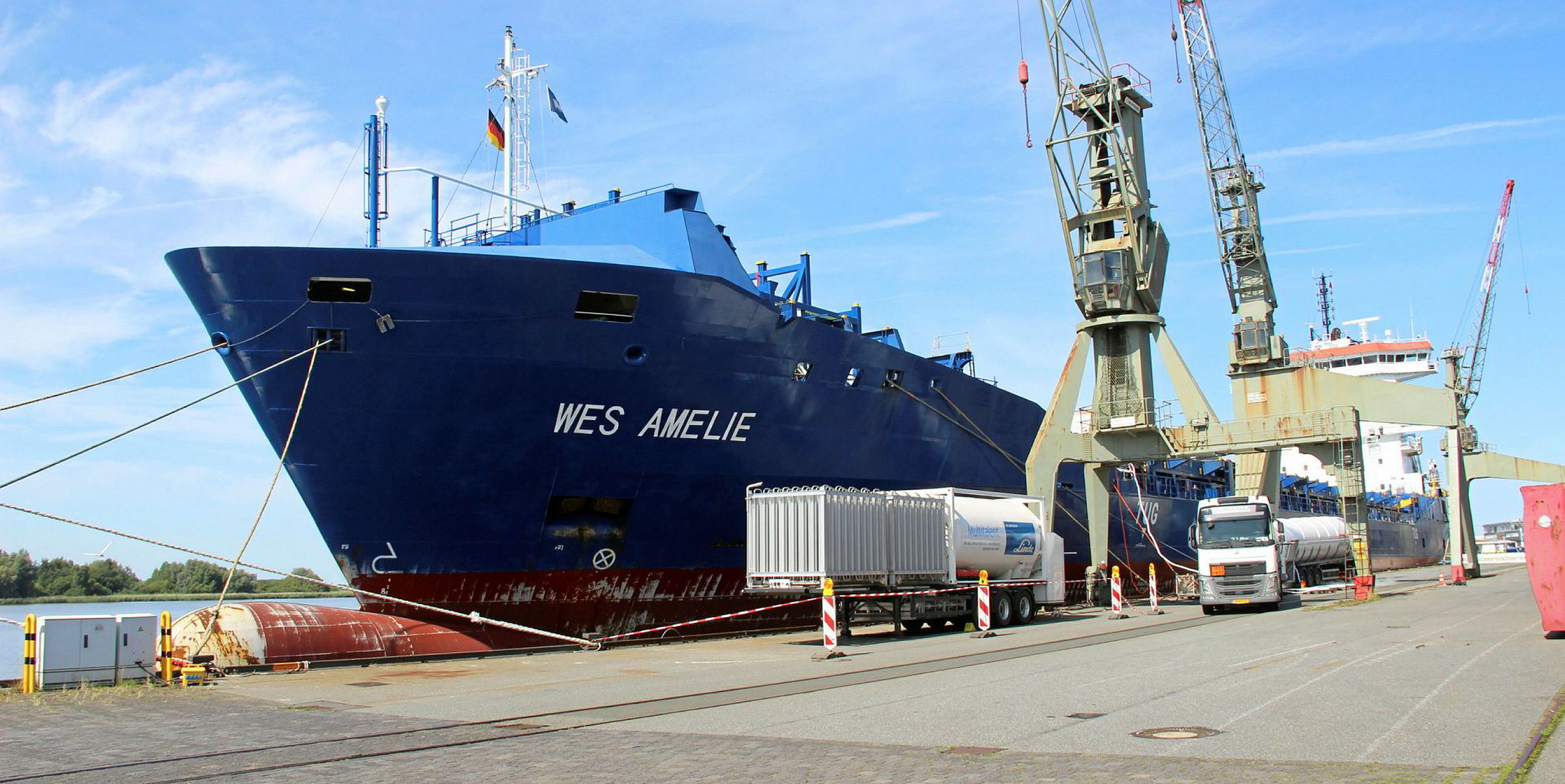LNG produced in bio and synthetic forms can be made available to the maritime sector in sufficient quantities and at costs competitive to other low or zero-carbon fuels, according to a study released by industry coalition SEA\LNG.
In a report based on a literature review and commissioned by SEA\LNG, research consultants CE Delft looked at the availability and costs of liquified bio methane (LBM) and liquefied synthetic methane (LSM), which are sometimes referred to as bio LNG and synthetic LNG.
Report author Dagmar Nelissen said both LBM and LSM are an option for the maritime industry to decarbonise.
For LBM, which can be created either by using anaerobic digestion fed by wet feedstocks or the gasification of woody biomass, the report concludes that the maximum supply is “more than sufficient” to cover demand from the shipping sector.
Producing LSM is a more energy-intensive process. To be considered a zero-carbon fuel, it should be produced by water electrolysis using renewable electricity and by combining the resulting hydrogen with CO2, which is from air capture or a biogenic source.
CE Delft said the current renewable electricity supply is “not sufficient” for this and its costs will be key to its competitiveness.
Competition
In an online briefing in advance of the report’s release, Nelissen said: “Supply of LSM and LBM exceeds the energy demand from the shipping sector, provided biomass is used to produce methane and sufficient investments are made in renewable electricity production.”
The researchers also acknowledged that owners of LNG-fuelled ships that want to switch to LBM or LSM might have to “compete” with other built environment and transport sectors.
Nelissen said production costs of LBM and LSM need not be significantly higher and could be comparable to costs of other zero-carbon fuels.
Separately, SEA\LNG member MAN Energy, which is doing a pilot project on LSM, said the current cost of LSM is currently eight to 10 times higher than LNG, but added that this could be reduced to three times the cost over time.
The CE Delft study also compared the costs of LBM and LSM with fossil LNG and very low-sulphur fuel oil and, separately, with green hydrogen and green ammonia.
“A significant carbon price is required to incentivise ships to switch from fossil LNG to LSM and LBM,” Nelissen said.
SEA\LNG chairman Peter Keller said the results of the study were “very encouraging” and “clearly show” that LNG with LBM and LSM offers “a pathway to decarbonisation” for shipping.
Keller added that it also shows there is “no issue” of either stranded investments or the conversion of assets that were originally built to use fossil LNG as they can switch to these more carbon-free fuels.
He said both LBM and LSM can start to be used as a drop-in fuel for existing LNG fleets and provide a gateway to meeting the IMO targets of 2030 and 2050.
In the long-term, he also expects them to become more commercially competitive.
Keller acknowledged that there are current issues with the coronavirus outbreak's impact on the market.
“There are going to be clear concerns from a financial and investment perspective, particularly in the short term,” he said. “It is not like we are going to get a lot of [newbuilding] orders this year or in the coming months.”
But he said SEA\LNG needs to continue to “influence” owners, operators and regulators so they understand the real benefits of LNG and its ability to provide a pathway to 2030 and 2050.







